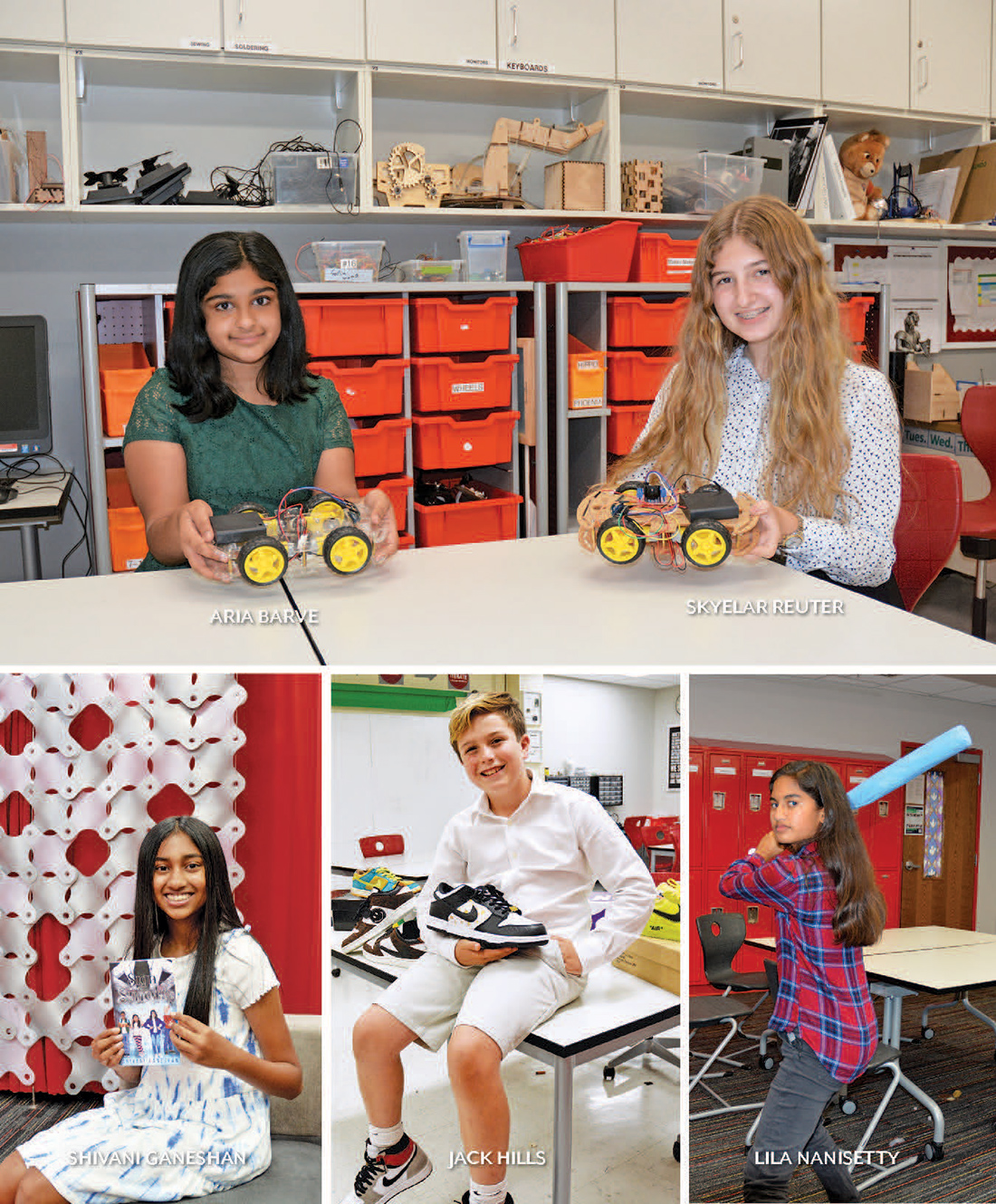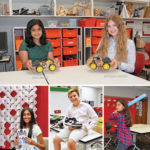While other elementary schools and school districts are mired in budget shortfalls, safety concerns, union disputes, curriculum controversies and declining achievement scores, Quest Academy in Palatine keeps graduating future engineers, authors, scientists, inventors, and artists, as they have for nearly 40 years.
What’s their secret? “It begins with our mission, to inspire and challenge gifted students,” Brian Frank, head of school at Quest Academy, said. “But it’s all made possible by the dedication of our teachers, the support of our parents, and students that any school would be proud to have.”
Quest Academy is a private, independent school where teachers are dedicated and trained to serve an unmet need in our educational system: the fact that gifted children (125 IQ and above) have specific needs for a specialized education that traditional school systems are often unable to provide.
“Giftedness presents many paradoxes that require specialized training,” said Amanda Davey, director of academics and student affairs at Quest. “Gifted students generally require fewer repetitions of concepts, or they can become bored easily. Giftedness is often domain-specific in that a student who is highly advanced in mathematics by several grade levels may struggle with organization and executive functioning skills. Gifted students are highly prone to identify deeper and make more complex connections between subjects so interdisciplinary teaching becomes more relevant.” Those characteristics and others are what motivates Quest Academy teachers to inspire students at their own individual paces to develop their passions.
Core Subjects, Humanities, and Exciting Partnerships
Students from preschool through 8th grade at Quest are not only exposed to the core subjects of reading, math, science, and social studies, but they have regular exposure to art, music, drama, Spanish, P.E., computer science and artificial intelligence. Quest Academy is the only elementary school in the United States that has partnerships with Microsoft and the University of California–Berkeley to develop AI curriculum for elementary schools.
Beyond academic subjects, Quest Academy stresses Social Emotional Learning (SEL) and character development. Good character is believed to be the foundation of every legitimate success in a person’s life. To complement the family values learned at home, Quest students are guided to develop the well-rounded character that will serve them well in life and help them serve others. From the youngest ages, Quest students explore the eight traits of character: compassion, courage, generosity, gratitude, honesty, respect,
responsibility, and self-discipline.
Of course, in today’s environment with COVID-19, Quest administrators and faculty remain dedicated to the safety of their staff, children, and families. Masking, social distancing, and student flow patterns are continually enforced to ensure the children’s safety. Quest Academy offers a Triple Attendance Model where students can attend in-person, 100% virtually, or via a hybrid approach of in-person and virtually. “It is a tribute to our teachers that we have not had a single case of in-school COVID transmission, nor have we had to go “virtual” at any point due to Covid outbreaks,” Frank said.
Impressive Results
As one would expect, Quest students regularly go on to excel at elite area high schools such as the Illinois Math and Science Academy, Lake Forest Academy, Woodlands Academy, Barrington High School, East and West Coast boarding schools, and others. Quest students win awards in national competitions in science, innovation, history, and mathematics. Quest students go on to attend Stanford, MIT, and many other elite colleges.
The difference is the tremendous range and breadth of creativity and accomplishments in one single elementary school. Quest Academy boasts a published author, an inventor, two robot builders, and a burgeoning shoe entrepreneur among its current students. Quest alumni run the gamut from Silicon Valley entrepreneurs to scholars in residence at The Juilliard School.
“We’re so proud of every one of our students,” Davey said. “But we take even more pride in providing a safe, stimulating environment for bright students who seek more challenge and connection to their learning than is often found in traditional school systems.”
Quest Academy graduates leave with inspired dreams, but also with confidence in themselves and in their abilities. One Quest Academy 6th-grader, Jack Hills says, “If no one says your dreams are crazy, then you are not dreaming big enough!”
Enabling the dreams of students like Jack Hills is what Quest Academy is all about.
To learn more about Quest Academy, visit questacademy.org.
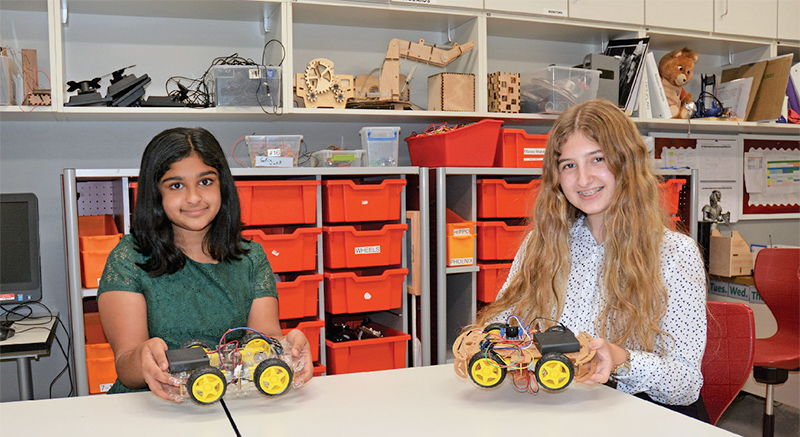
8th Grade Robot Builders
Aria Barve and Skyelar Reuter recently completed a virtual summer internship at U.C. Berkeley School of Electrical Engineering and Computer Science EECS, where they worked with faculty and graduate students in designing a teaching curriculum for artificial intelligence, using autonomous racing robotic cars.
Aria Barve
“The summer internship at U.C. Berkeley proved to be a great opportunity to ideate, implement, and test interesting new technologies to build autonomous vehicle gaming. We collaborated closely with faculty and graduate students at U.C. Berkeley to develop an AI curriculum for elementary school students. Each week, we met through Zoom calls to review progress on our projects, give and receive feedback, and contribute to the project ideas. Being remote, we also helped create the Bill of Materials for the various components and assemble a prototype autonomous vehicle. It was very rewarding to see the project evolve, and more exciting to see many of our ideas incorporated into the project.”
Skyelar Reuter
“Spending the summer with the graduate students at Berkeley was fun. Every week we signed into a Zoom call and discussed how we could improve our game design. We were tasked with creating two separate games that teach kids K-4 artificial intelligence. My favorite activity was working on a maze game which eventually turned into a soccer game. The first few meetings were brainstorming with the graduate students on what kinds of games would be pleasing to the younger students. By the end of July, we had ¾ of the plan done, and we started building and coding the car. Building the car was a challenge because they had not given us instructions, but rather wanted us to try to problem-solve. Since I was working on the maze game/soccer game, the car I built had to be able to push around a ball while also knowing the direction the car is facing. It took around three weeks to figure out how to measure which way the car was facing since all of our previous ideas were unreliable or not appropriate for an autonomous car.“
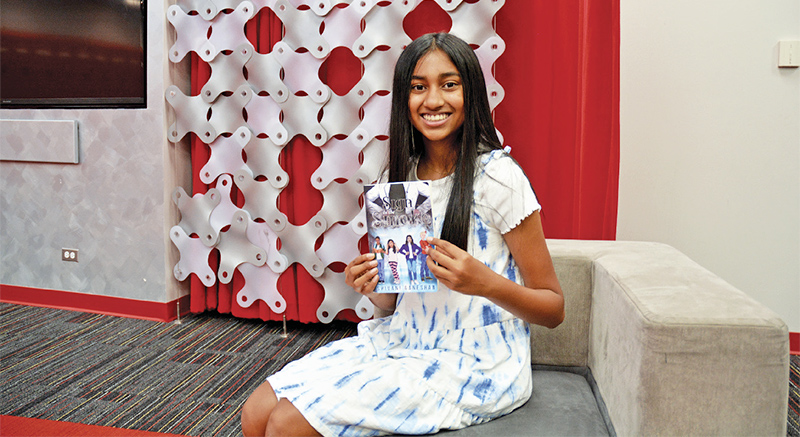
8th Grade Robot Builders
As part of a 5th-grade writing project, Shivani Ganeshan wrote a short children’s mystery. But her passion for writing kept bringing her back and she continued developing additional parts of her story. Each day, Shivani would return to her teacher, Darrell Maskell, with another idea, plot twist, or chapter. Eventually, she and her parents began working with a publisher, and “The Sign in the Smoke” was born.
Shivani Ganeshan
“When I was in fifth grade, our classroom project was to write a 10-to-20 page fantasy story so we could learn about constructing a magical world, characters, and objects. I was very excited to start writing and began after a few weeks of planning my characters, plot, and other parts of the story. We had some time to write in the classroom, but when I went home, I would keep writing because my imagination took off. When the deadline came, my story was about 120 pages long. I brought it home for my Mom to read, and she and my teacher both agreed that we needed to go forward with it. We reached out to multiple people and found an editor to make slight adjustments to the writing. After a few drafts and edits, we were ready to work with a publisher. “The Sign in the Smoke” was published on May 11, 2021. It is a fantasy novel written for kids 8-13 years old, but can be enjoyed by anyone or as a family read. In the story, there are four children who stumble upon their sinister science teacher’s plot to destroy the world. They must stop her before they lose everything they care for. Will they be able to? Read “The Sign in the Smoke” to find out! We are also donating 100% of my royalties to the Malala Fund for girls’ education. The book is available on Amazon.com.”
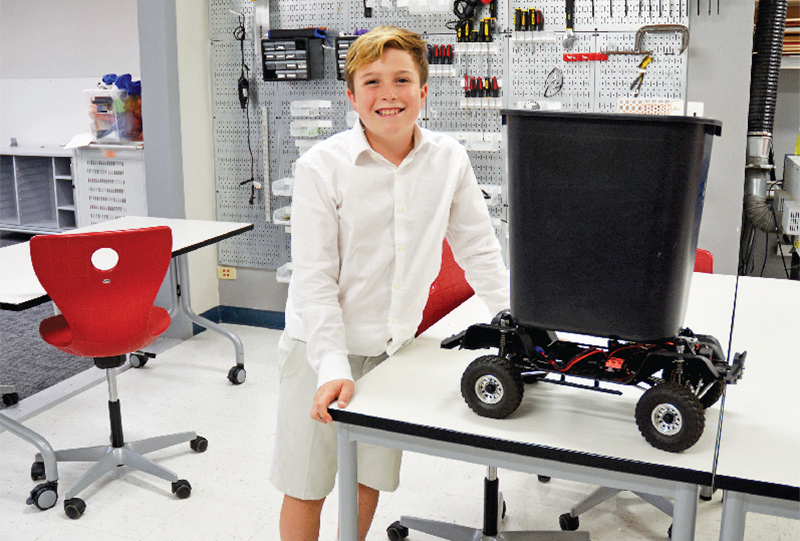
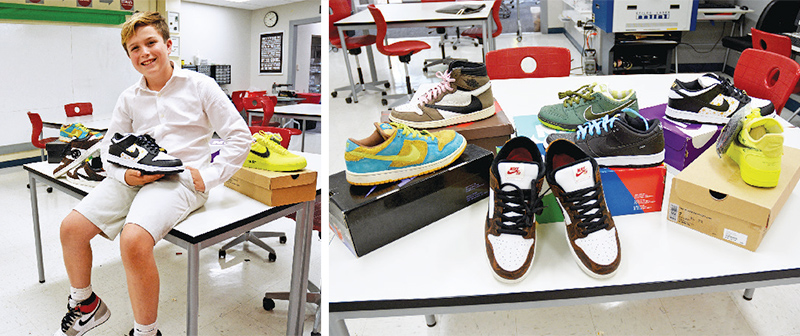
6th Grade Sneaker Entrepreneur
Jack Hills has a passion for reading about and collecting rare designer sneakers, and wondered if he could create a business, selling shoes to collectors. He became very good at spotting fakes and learning the market prices. His brother and he are both “sneaker heads” and supply three online stores and several collectors now. Jack also is inventing a new way to send out the trash. Jack credits Elon Musk as inspiration and a role model for him as an inventor.
Jack Hills
Sneaker Business
“I have always wanted to be an entrepreneur like my Dad, my Grandpa and my Great-Grandpa. When I was younger, in order to make some money I would ride my bike down the street to a golf course and look for golf balls in the woods and then bring them home, clean them, and sell them. I did the same thing painting and then selling my pictures to friends and family.
The sneaker business process is quite complex and it takes a lot of research and time to learn. Everyday, I check at least three websites for an hour researching prices and to see if any good deals have been posted. I also compete on the Nike Snkrs app to get the latest and newest drops which means I enter raffles to win a pair of hype new shoes for under-market value before they are offered to the public. I always try to use different devices to enter multiple times to win each shoe. When I buy used sneakers there is a whole authentication process my brother and I do to make sure the shoes are not fake or damaged.
Tommy and I recently were chosen to have a booth at Sneakercon at the Renaissance Hotel in Schaumburg. We bought and sold shoes to sneakerheads that came there from all over the United States.”
Trash Technologies
“One of the chores at our house that my brother and I have to do is to take the garbage out every week and bring the cans back in. That job isn’t always my favorite when it’s windy or cold out, plus the garbage company comes really early in the morning so it’s not fun to take the trash out when you have to get out of bed to do so. That’s why I invented Trash Technologies—self-driving trash cans that can be controlled by your phone. My invention won at the Illinois Invention Convention and took second place at the National Invention Convention. I was competing against other sixth-graders, as well as seventh- and eighth-graders from all over the country.”
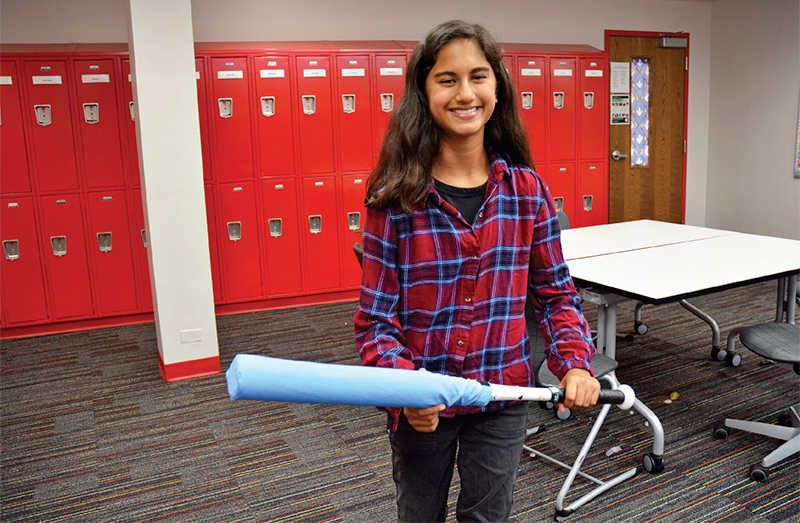
7th Grade Sports Equipment Inventor
Lila Nanisetty is a bright student looking to solve problems, and is also a top-notch softball player. As part of the recent Global Invention Convention competition, Lila designed a pressure-sensitive cover for a softball bat to help improve her batting swing.
Lila Nanisetty
“The thermo-bat is an invention I created to help me improve my batting skills. As a softball player, something I used to struggle with was batting. To hit the ball away from the foul line meant you needed to hit it on the right part of the bat. This was hard to improve on since there is nothing that lets you know where on the bat you hit the ball. I wanted to make something that would fix this problem. That’s when I came up with the Thermo-Bat.
The Thermo-Bat is a fabric sleeve you can put on your bat that shows where you hit the ball. Ideally, I would use a material that changes color with pressure (Piezochromic) but it was new and unavailable. I ended up using thermochromic material, which changes color with heat. When you swing at the ball, there is heat generated from the collision, which changes the material’s color. I participated in Invention Convention with the Thermo-Bat. At the Chicago Invention Convention, I won first place for all of 6th grade. I then advanced to Nationals, where I won the Best Engineering award. I was also a finalist at the first-ever Global Invention Convention, where I got to speak with judges from China, Singapore, Mexico, and the U.S.A. Recently, I was invited to present my invention at the STEAM competition at Wrigley Field, put on by the Chicago Cubs and Horizon Therapeutics. I was surprised and humbled by how something I made to improve my own batting was recognized and taken interest in nationwide. To any future inventors, I hope that you will take pride in your work. Your invention doesn’t have to be super complex. Sometimes, the simple solutions are
the best.”
– End –
Share this Story

